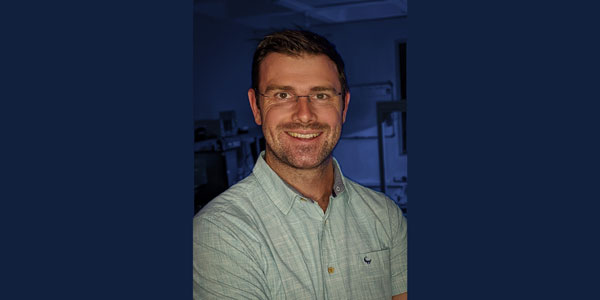Prestigious NRF P-rating for Dr Mitchell Cox
- Wits University
Cox earned the rating for his work in research and developing cutting-edge structured light and low-cost laser internet.
South Africa’s National Research Foundation (NRF) P-rating is reserved for early-career researchers whose work shows exceptional potential to become future international leaders. Since its introduction in 1983, fewer than 140 researchers in South Africa have received a P-rating.

As Senior Lecturer in the School of Electrical and Information Engineering at Wits University, Cox’s innovative photonics and optical communications work has recently received a string of honours:
- In 2024, he received the Meiring Naudé Medal from the Royal Society of South Africa for early-career excellence in science.
- In 2023, he was awarded the Friedel Sellschop Fellowship by Wits University for emerging research leadership.
Cox’s recognition stems from his dual focus: pushing the frontiers of structured-light photonics while developing ultra-low-cost wireless optical communication systems – laser-based technologies that promise high-speed Internet in areas where fibre and radio are impractical or unaffordable.
“I began as an electronics hobbyist, learning about and building all sorts of gadgets in my backyard. Today my group shapes laser beams into complex patterns that can carry the internet through the air. Essentially, fibre without the fibre,” Cox said.
From hobbyist radios to world-class photonics
After several years in industrial automation, Cox returned to university to pursue an MSc that took him to the European Organization for Nuclear Research, known as CERN. The experience ignited a passion for research and, guided by Professors Andrew Forbes and Ling Cheng, he pivoted to photonics for his PhD. “I grew up building radio transmitters and later helped deploy community Wi-Fi meshes. Optical communications felt like the natural next step,” he reflected.
Since completing his doctorate in 2020, Cox has published 26 journal papers and a book chapter, amassed over 1 600 citations, and holds an h-index of 17. He now leads the Wits Optical Communications Laboratory, which features a permanent rooftop wireless optical link – a rare real-world testbed for structured-light experiments.
Wave-fronts of impact
Cox’s research brings together structured-light physics, machine learning, and practical engineering to push the boundaries of wireless optical communication and photonic computing. One of his group’s most promising directions is the development of all-optical neural networks: systems where light itself performs computation, removing the need for power-hungry electronic processors.
By using passive optical elements—no moving parts, no digital silicon—these architectures could execute AI workloads at speeds far beyond current hardware, and with a fraction of the energy. At a time when large language models and other AI systems consume staggering amounts of power — with modern data centres drawing as much electricity as entire South African cities — this kind of ultra-efficient computing is becoming increasingly critical.
The foundations for this work were laid in Cox’s earlier studies of wireless optical communication using structured light—laser beams shaped into rings, grids, and more complex patterns that interact differently with atmospheric turbulence.
“Twinkling stars are beautiful, but the same atmospheric distortion that makes them shimmer destroys laser signals,” he explains. His experiments revealed that several assumptions about beam robustness were unfounded, leading to the concept of modal diversity: transmitting multiple shaped beams simultaneously to increase resilience without relying on complex tracking or adaptive correction systems.
To support both communication and computing applications, Cox’s lab also builds detailed models of how laser signals behave in real-world conditions. These include time-series simulations and machine-learning tools trained on live data from rooftop test links, capable of predicting burst errors and enabling adaptive signal strategies. Together, these threads aim to make photonic technologies—once confined to research labs—not only practical, but transformative.
Looking ahead
As global demand grows for faster, more efficient data systems, Cox’s research is opening up new possibilities—not just for advanced communication, but for how computation itself is done. His work blends fundamental optics with practical engineering, with a long-term aim of making photonic technologies accessible and impactful beyond the lab.
But while the world races to build faster networks and smarter machines, Cox is equally focused on ensuring that these advances reach those who are still left offline. “We also need to connect the unconnected in South Africa to be part of this wave,” he says. “It is a uniquely difficult problem—one that pure market forces have struggled to solve. Perhaps this is where academia can offer something different.”
“The P-rating is an honour,” Cox said. “But more than that, it affirms that we can tackle complex, global challenges from right here in South Africa. Whether it is advancing the frontiers of light or getting fast Internet into underserved areas, the goal is the same: to do research that matters.”

